Media | Articles
Your handy 1985–92 VW Golf GTI buyer’s guide
Let’s first set out some guidelines on what we’re actually covering here: This guide covers the A2 Golf GTI and GTI 16v that were available in the United States between the 1985 and 1992 model years.
Yes, these cars were vastly more popular overseas, and yes, there are many advantages to a European or U.K.-origin GTI. And while, many U.K.- and European-spec cars have come over to North America in fair numbers since the 25-year rule expired on the oldest cars around 2016, the vast majority of cars available here in the United States are going to be the U.S.-spec cars that have been here for almost 40 years.

The A2 Golf debuted in the United States for the 1985 model year, and it was something of a letdown at the beginning. That’s mostly because it was upstaged by the more popular Jetta, which dispensed with the hatchback and went for a more conventional three-box design. Sales of the Golf went in the tank almost immediately, dropping by about eight percent versus the outgoing A1 Rabbit.
Worldwide, though, the A2 was a smash. It retained the tight lines of the original Giugiaro-designed A1, but VW design director Herbert Schäfer rounded every sharp corner. The Mk2 grew in almost every direction: Wheelbase increased by almost three inches; length by 4.3 inches; width by as much as 2.7 inches; height by 0.8 inches. Curb weight also increased by as much as 600 pounds. The dimensional changes pushed the Golf into the EPA’s Compact category, rather than the Subcompact class it occupied before.
1985
Like the outgoing A1 Rabbit, all U.S.-based GTIs were assembled at the Westmoreland, Pennsylvania plant in 1985. Outside, the GTI wasn’t all that distinct from lesser Golf trims. All U.S.-based A2 Golf GTIs got flush rectangular projector headlamps, instead of the sealed beam units in other trims. Black bumpers and fender flares were part of the GTI trim, as well as red accents in the bumper trim. The wheels were 14 x 6-inch alloys wrapped in 185/60HR14 Goodyear Eagle GTs. It was all designed to be subtle, not drastically different from a run-of-the-mill Golf.
Marketplace
Buy and sell classics with confidence
Similarly, the interior was European and businesslike, for the most part. The dash was a direct lift from any other Golf. The seats, though? World class, especially from an American standpoint. The A2 Golf GTI featured heavily bolstered, reclining bucket seats with a ton of lateral support, upholstered in red and gray strobe-stripe material. Drivers also got a leather-wrapped wheel with four horn buttons, and a leather-wrapped gearshift knob.
The issue at the outset was that engine power didn’t increase much, even in the “hot hatch” GTI. U.S.-based Golf GTIs introduced in 1985 were equipped with the same 8-valve 1.8-liter inline four as the outgoing A1 Rabbit GTI, albeit with a 10 percent horsepower increase to 100 hp and 105 lb-ft of torque, thanks to bigger intake valves, higher compression pistons and Bosch KE-Jetronic fuel injection. But that power increase was sopped up by the heavier curb weight. The only transmission option in 1985 was a five-speed manual.

“The compression ratio was been increased from 8.5:1 to 10.0:1, which is the highest compression I’ve seen in a long, long time,” wrote Leonard Kucinski in April of 1985, in his review of the Golf GTI for Allentown, Pennsylvania’s broadsheet, The Morning Call. “VW said the use of such a high compression ratio was made possible through a newly developed digital electronic ignition system incorporating a knock sensor control unit.” The electronics allowed the GTI to run on unleaded regular without knock issues. What a time to be alive!
The key to fun in these cars wasn’t neck-snapping power, though, but precise handling. Steering was a manual rack-and-pinion setup, with power assist as an option. With MacPherson struts up front and a 15-mm stabilizer bar, a torsion beam axle with integral trailing arms, and a 20-mm stabilizer bar at the rear, the front-drive Golf GTI offered benchmark handling in 1985. “If you know what you’re doing, it will do what you know,” wrote Kucinski. The four-wheel, power-assisted disc brakes were also significant kit in what amounted to an economy car in 1985.
Optional equipment was exceedingly limited in 1985. Buyers could opt for A/C, a sunroof, power steering, cruise control, one of two stereos (with or without a cassette), and floor mats. The 1985 GTI was offered in just three colors: Black, Mars Red and Diamond Silver Metallic, which would run you an extra few bucks over the solid colors.
1986
For 1986, the only major change was the addition of a federally mandated center high-mounted stop light.

1987
In 1986, Volkswagen introduced a new Scirocco with a 16-valve version of the 1.8-liter four-cylinder. For the 1987 model year, Volkswagen slipped that engine into the GTI and named it the Golf GTI 16v. The 8V-powered GTI disappeared for the 1987 model year.
Power increased to a healthy 123 hp, according to the 16v brochure. It’s still not exactly “fast,” by today’s standards given its 8.5-second zero to 60 time, not to mention its leisurely jog to the quarter mile in 18 seconds at 88 mph, but it’s appropriate to the car and the time. William Jeanes at Car and Driver noted that the 16v in the Jetta “hauls you along quickly enough, it lets you know that it’s hard at work by keeping the decibel level high. The engine sounds seem to be anything but out of place in a sporty small sedan, but we’ll admit to feeling relief when we reached fifth gear and settled in at freeway speeds—at which point the engine settles into a quiet, comforting hum.”
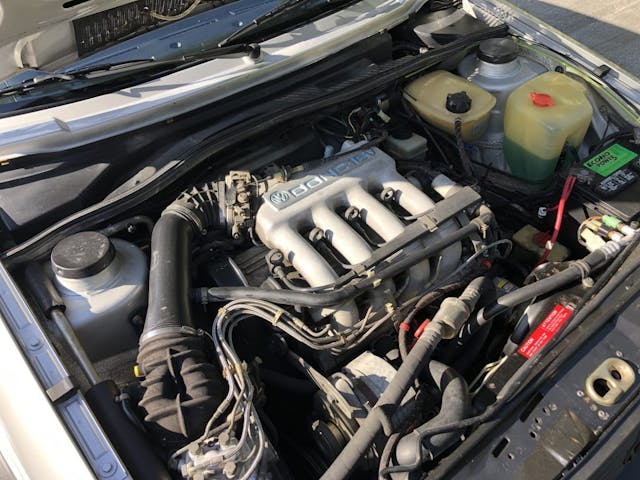
Beyond the engine, the changes in the 16v were slight. The wheels are still 14 x 6-inch, but they’re the more familiar “teardrop” style. Those wheels were also shod with 205/55VR14 Pirelli P600s. The driver’s seat provided a height adjustment along with the recline feature. Options on the 16v included similar items to the 8V GTI, but added a heavy duty cooling package, a power package (including power windows, locks and mirrors), and standalone power locks.
The color palette broadened to Tornado Red, Diamond Silver Metallic, Dark Blue Mica, and Red Pearl Mica, the last three incurring a charge for metallic paint.
1988
Perhaps the biggest news for 1988 had nothing to do with the car, but more to do with where it was built. On July 14, 1988, Volkswagen of America officially closed Volkswagen Westmoreland Assembly. From here through 1992, all Volkswagen Golf GTIs sold in the United States came from the Puebla assembly plant in Mexico.
Optional equipment in 1988 shifted to include a number of option packages (P02, P03, P04, P15 and P39). P15 offered the most equipment, including radio prep, A/C, sunroof, the power package and cruise control. Additional equipment included a 6-speaker AM/FM radio/cassette, a power amplifier, a cassette storage box, theft protection, floor mats and California emissions.
Colors changed slightly, dropping the Diamond Silver Metallic and Dark Blue Mica, and adding Black and Alpine White.

1989
The major revision for the 1989 model year was a lone color change: Diamond Silver Metallic gave way to Silver Gray.
1990
This year marked the return of the 8V GTI, after a three year hiatus. Comments from Jeanes upon driving the 16v-powered Jetta GLI in the July 1989 issue of Car and Driver hinted at why the lower-powered GTI made a comeback: “The Jetta GLI 16v now costs—equipped with anti-lock brakes, air conditioning, cruise control, and a few other add-ons—a thumping $18,800.”
The base price of a Golf GTI 16v was cheaper, but $13,650 in the George H.W. Bush era was two grand more than you’d pay for a Mustang LX 5.0. The 8V GTI sought to address that, but it was severely de-contented compared to a GTI 16v. The 8v was basically a four-door Golf GL with a few visual GTI cues. You did get a five-horsepower increase over the two-door GL thanks to Digifant fuel injection, but gone were the four-wheel disc brakes in favor of the Golf GL’s rear drums, and these GTIs were equipped with the wide ratio five-speed gearbox from the GL.
1990 was also the first year you could purchase a GTI Wolfsburg Edition. For the first time, American buyers were able to equip an A2 GTI with round headlamps instead of the composite projector lamps from every other year. A GTI Wolfsburg Edition buyer also got a short, black, roof-mounted antenna, which kicked off a tradition that still exists today.
Both GTI and GTI 16v were offered in just three colors: Tornado Red, Alpine White, and Black.
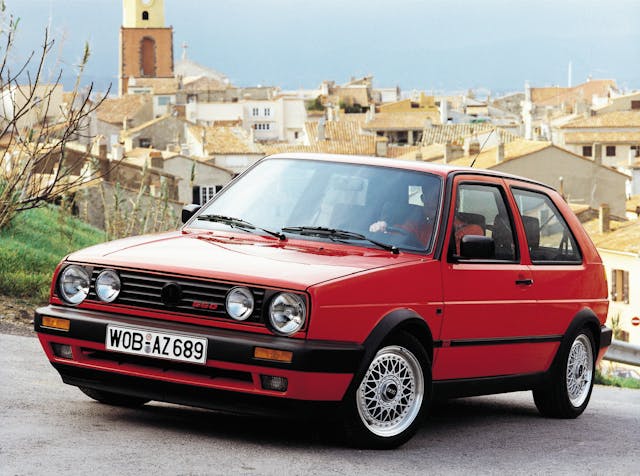
1991
In 1991, the GTI and GTI 16v both underwent visual changes from the year before. Carried over from the Wolfsburg Edition, GTI and GTI 16v were both equipped with the European quad round headlamps, with a red detail line around the grille.
The GTI 16v’s engine displacement increased to 2.0 liters, and with it came a power increase to 134 hp and 133 lb-ft of torque at 4400 rpm. 15-inch BBS wheels came as part of the 16v trim. The Recaro seats lost their vinyl bolsters and went full cloth.
Adding to the three colors from 1990, 1991 brought the green Montana Clearcoat Metallic.
1992
1992 marked the final year in the United States for the A2 GTI and GTI 16v. It carried on a year longer than it did in the rest of the world. The biggest change was the addition of Light Sahara Clearcoat Metallic, Dark Teal Clearcoat Metallic, and Calypso Clearcoat Metallic, all of which were exclusive to the GTI only. The GTI 16v featured the same colors as the 1991 model year.
Before you buy
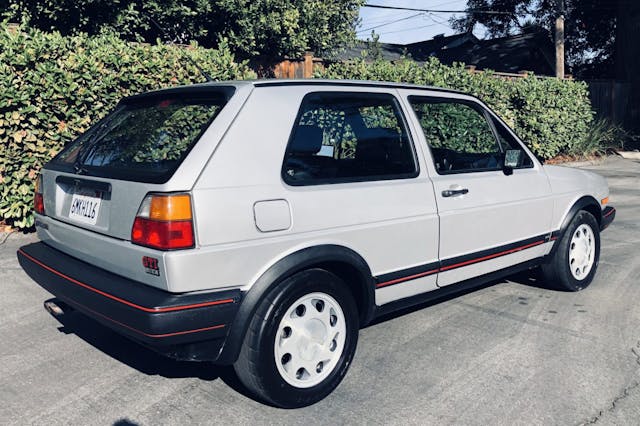
These are unibody cars that are now 36 years of age. When they were new they were daily drivers, and in the parts of the country where it snowed, many of them succumbed to the ravages of oxidation. But that’s general advice for any car that’s pushing 40 years old.
The problem for A2 Golf GTI owners is that these cars were plagued with water leaks, which could rot out a floorpan in a couple of years. Water sloshed in unimpeded from a number of different places: door membranes and seals, hatchback seals, turn indicator seals, and clogged drains for the sunroof and cowl. The windshield corners can also leak. This comes up after the windshield has been replaced. The Mk2 Golf Channel has a good primer on the top 13 reasons why your A2 Golf is full of water. Rust is also common around the holes where the wipers come up from under the cowl.
Beyond water leaks, the heater core is also known to leak, and it’s a job A2 Golf enthusiasts talk about with the thousand yard stare of a mosh pit spectator at Woodstock ‘99.
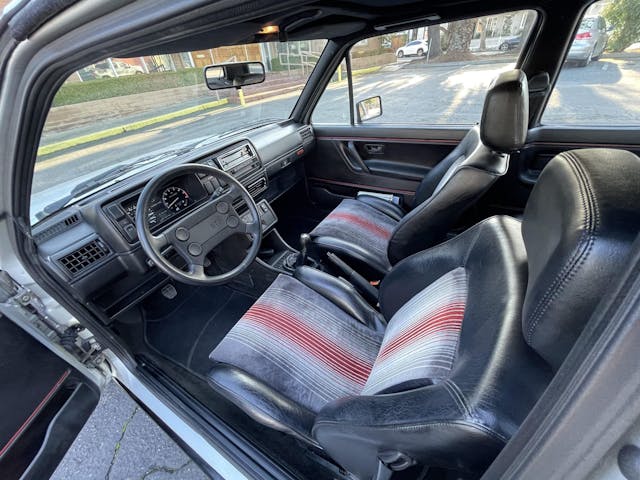
Replacement body panels exist. Front fenders, radiator supports, inner and outer rockers, rear fender patch panels and tail panels are available, but they’re not cheap (outer sills are in the $239 range, for example). You need to carefully evaluate the value of the car versus the cost of setting any rust repair right. Our valuation section below may indicate that bodywork can outpace the value of a perfect, low-mileage car.
Engines are generally stout provided they’ve had the timing belt replaced on schedule. The 8v engines are non-interference, but the 16v are interference engines. The 16v engines had very mild cam profiles, and take well to any of the thriving aftermarket’s hotter cams and ECU tunes. The five-speed gearbox is pretty solid, but if it hasn’t been rebuilt yet it will almost certainly have a bad second gear synchro. Some forum members also report that failing motor mounts and a misadjusted linkage can cause grinding gears.
Electrical problems seem to be limited to either failing older components (window motors, blower motors, gauges, relays, etc.), or the result of hackery in the form of bad audio and lighting installs.
Seat upholstery is generally tough, and while the dashes can be prone to cracking, it’s no worse than any other car from this era. Carpets wear, but are replaceable. The bigger trouble is replacing missing parts, as interior parts are difficult to source.
1985—92 Volkswagen GTI valuation
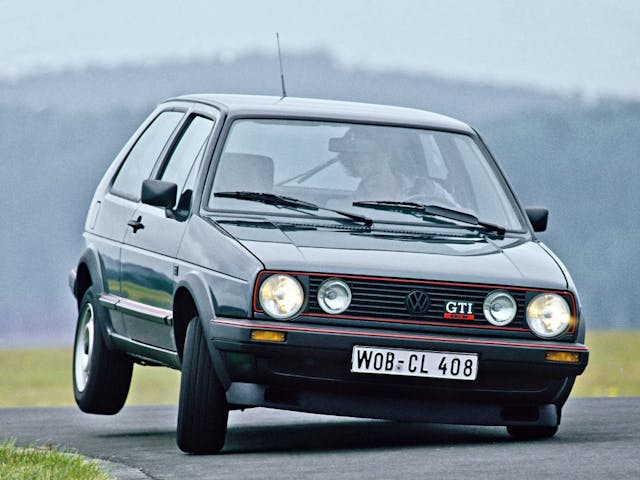
The Hagerty Valuation Team notes that prices have been creeping up for this model, especially over the last couple of years. A GTI in median #2 condition will have experienced a 62 percent increase in value over the last three years, but please check here for the latest valuation data.
That said, the GTI and GTI 16v is still a relative bargain in the 1980s European car market. Over the last three years, Bring a Trailer has only sold ONE Mk2 GTI for more than $20,000 and it was a heavily modified example with a VR6 under the hood. The cleanest, unmodified GTI 16v in the last year was a 1987 in Diamond Silver Metallic, with just 16,000 miles. This example only sold for $15,750.
Hagerty is providing a lot more insurance quotes on GTIs as they move from daily driver to collector car status. Over the last five years, Hagerty has provided 50 percent more quotes, and in the last three years, the quoted value of those cars has increased by 16 percent.

Because of their relative affordability, and the people who were interested in them when they were new, GTI and GTI 16v owners are much younger. A full 39 percent of A2 Golf quotes come from millennials, who only make up 19 percent of the market. Right behind them, Gen X quotes 33 percent of A2 Golfs, making up 32 percent of the market. Boomers—the largest representative group at 37 percent of the total market—only quote 15 percent of A2 Golfs. Gen Z makes up just six percent overall but quotes 10 percent of A2 Golfs. Preboomers have about as much real estate in the market as Gen Z, and they only quote 3 percent of the A2 Golfs that come to Hagerty.
Based on information from the Valuation Team, the year doesn’t affect value that much, and neither does the presence of a 16v motor. The later 2.0-liter 16v cars have about a five percent boost in value, but all of the cars in #1 condition hover between $15,200 and $17,100.
These GTIs are on the march, for sure. If you’ve ever been interested in owning one, now may be the perfect time. Five years from now, you shouldn’t be surprised to see excellent quality, low-mileage examples sell for $25,000.


















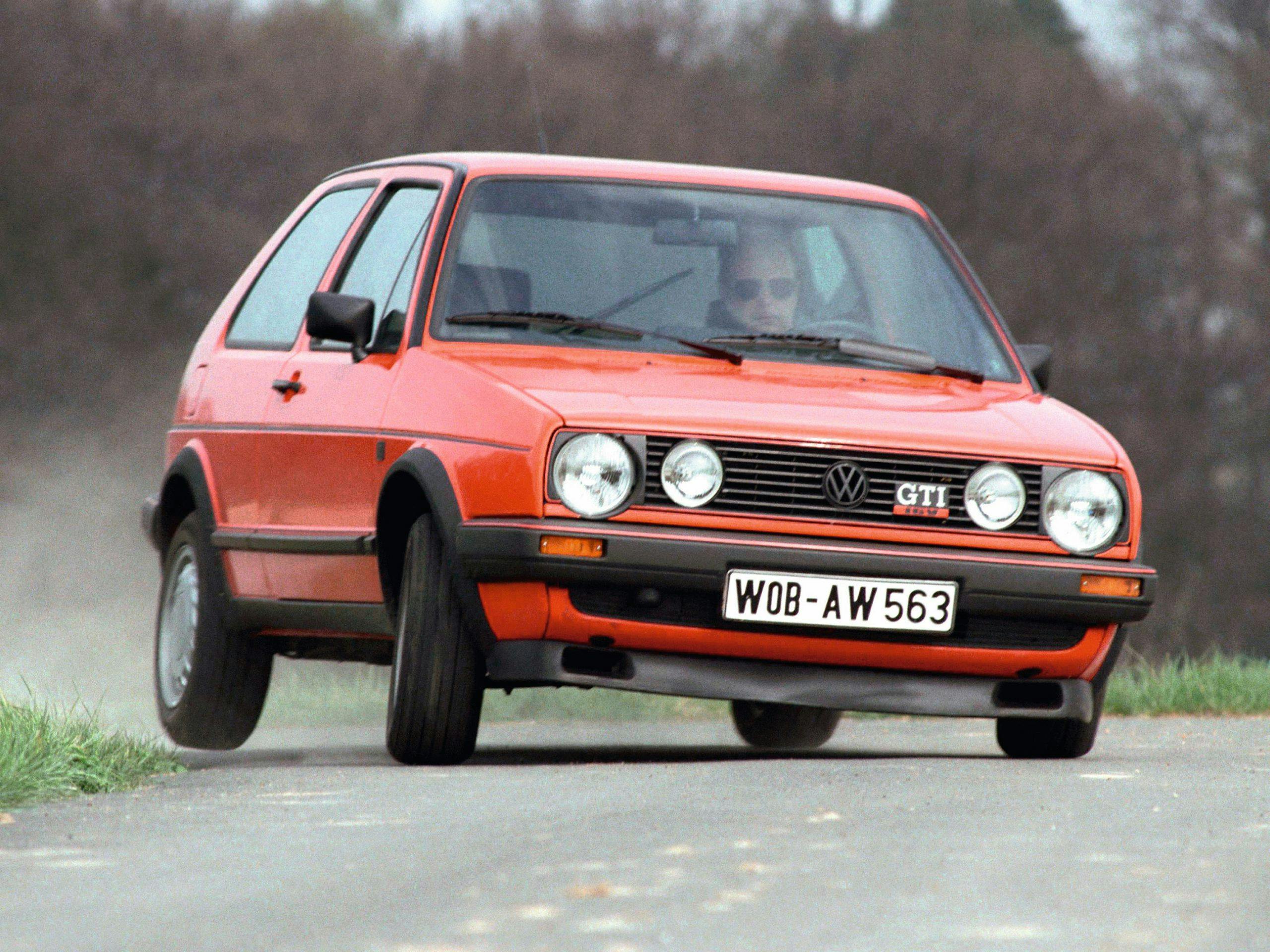
I have a loaded up 8 Valve 1987 GTI in Atlas gray Metallic. I am the second owner from new. It has power windows, central locking and cruise control. So 8 Valve GTIs existed in 1987.
had a grey 1987 8 valve too. It also had square headlights not circles
I still have my White 1987 8 Valve square head lights B car…